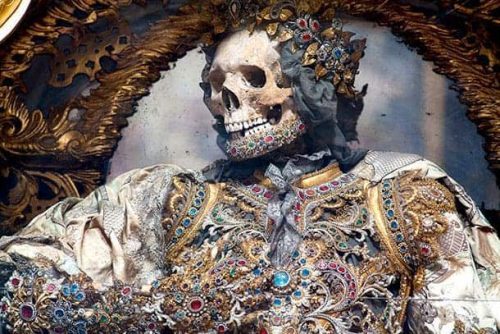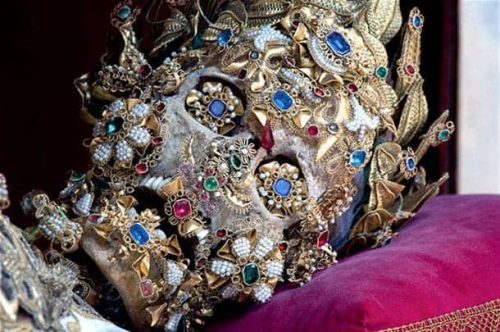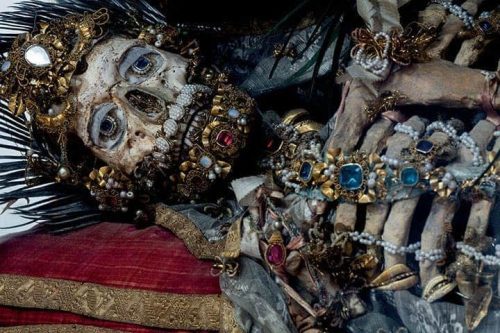
Hidden beneath the bustling streets of Rome lies a secret world filled with the macabre and the mysterious. These are the catacombs, ancient underground burial chambers that have fascinated historians and archaeologists for centuries. Among the many discoveries made in these catacombs, one particularly intriguing find is that of the Catacomb Saints – lavishly decorated skeletons with a captivating history dating back to the 16th century.
- The Origins of the Catacomb Saints:
The Catacomb Saints are not true saints in the traditional sense, nor are they religious figures of significance. Their history is intertwined with the tumultuous events of the 15th century when Western Europe was gripped by the Beeldenstorm, a period marked by the widespread destruction of religious images, Catholic art, and church decorations.
The Catholic Church found itself grappling with the loss of these valuable artifacts and sought a unique solution to preserve its cultural and religious heritage.

- The Vatican’s Unusual Solution:
In response to the iconoclastic fervor of the Beeldenstorm, the Vatican devised a rather unconventional plan. Thousands of skeletons were unearthed from the catacombs beneath Rome and dispatched to towns across Germany, Austria, and Switzerland.
Although mostly devoid of religious significance, these skeletons were meticulously adorned and decorated to resemble saints. This artistic transformation was an attempt to maintain a semblance of Catholicism in regions dominated by religious protesters.

The Catacomb Saints, also known as jeweled skeletons, were adorned with intricate jewelry and garments. Some were even given ornate crowns, transforming them into visually striking figures.

These bejeweled skeletons became revered relics, displayed in churches as a connection to the divine.
Conclusion:
The history of Catacomb Saints is a unique chapter in the annals of religious and cultural preservation. These lavishly adorned skeletons, born out of the tumultuous Beeldenstorm, serve as a testament to the creative solutions employed by the Catholic Church to safeguard its heritage.

The story of the Catacomb Saints is a fascinating exploration of how art and religious symbolism converged during a period of upheaval. While their origins may be unconventional, the jeweled skeletons remain as captivating artifacts that offer a glimpse into the complexities of religious history. Unveiling this fascinating history allows us to appreciate the resilience of cultural heritage in the face of challenges and the creative lengths taken to preserve the essence of a belief system.






